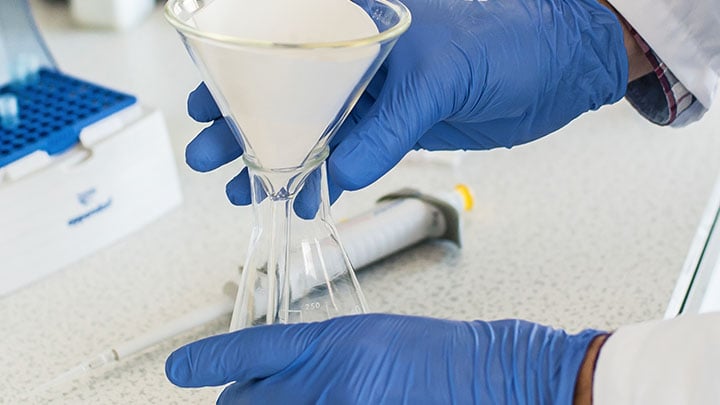Intertek surfactant analysis capabilities range from simple tests involving one technique to protocols involving many analytical techniques.
Surfactant Analysis Techniques:
Surfactant testing expertise extends across a range of capabilities, including NMR, Mass Spectroscopy, LC-MS, HPLC and GC-MS. One or several approaches may be employed depending on the nature of the surfactant or concentration.
Complex surfactant formulations may contain dozens of components at vastly varying concentration levels, requiring a multidisciplinary approach. A coordinated approach can be required, which bring together skills in extraction, separation science and spectroscopy. Intertek has the required expertise in this area from the years of experience inside ICI and other large surfactant manufacturers. A more often used standard approach is a combination of NMR and MALDI which combines both chemical specificity and absolute quantitation.
Non Ionic Surfactant Analysis:
- EOPO copolymers (Poloxamers)
- Alcohol or Phenolic initiated alkoxylates (Butanol ethoxylates, Nonyl phenol ethoxylates)
- PEG esters (Adipic ethoxylate esters)
Anionic Surfactant Analysis:
- Aliphatic and aromatic Sulphonates and Pulphates (Alkyl benzene sulphonate)
- Phosphate Esters eg Nonylphenol Ethoxylate Phosphate ester
Cationic Surfactant Analysis:
- Ester quats (Di-tallow triethanolamine ester quat)
- Alkyl amine quaternaries (Dimethyl ammonium quat)
Zwitterionic Surfactant Analysis:
- Betaine Cocamidopropyl betains (CAPB)
Regulatory Chemical & Materials Analysis Expertise
WHITE PAPERS
WEBINARS
- PFAS Monitoring in Environmental and Polymer Samples
- Microplastics and Nanoparticles - Definitions And Regulatory Considerations
CASE STUDIES
- Dissolution of Hydroxyapatite Coatings for Medical Devices
- Particulate Contamination control and analysis
- Case Study and Fact Sheet: XRF Analysis and XRF2 Mapping
BROCHURES
Intertek Wilton: The Wilton Centre, Redcar, TS10 4RF, UK
Download Directions


